ESCAPE
Wind pump safari in the Karoo Highlands
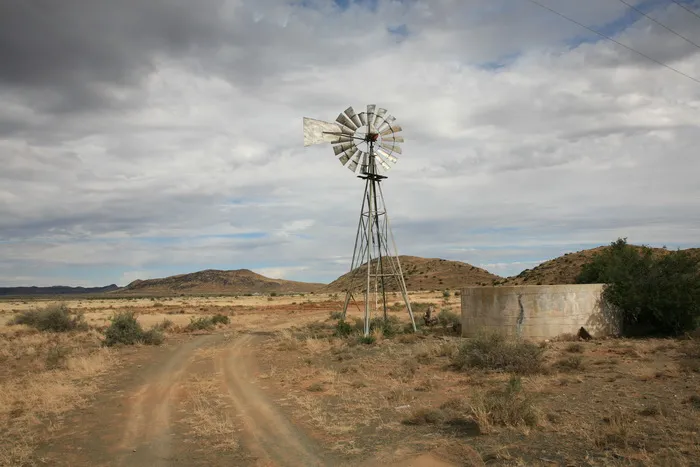
Nothing says ‘Karoo Highlands’ better than a wind pump spinning in the veld.
When you mention the words “windmill” or “wind pump” to most Northern Cape overlanders, they will immediately think of the Fred Turner Museum in Loeriesfontein, where more than 27 of these creaking old machines are gathered.
But, if you look around as you drive through the Karoo Highlands, you will see wind pumps all around in the veld. For lovers of the Karoo, the sight of a wind pump anywhere in the world will always remind you of the vast open spaces of the Northern Cape. You think lamb chops, Victorian-era houses, craggy mountain ridges, dirt roads, donkey carts and the book-ends of a day, where there’s almost always a snaggle-toothed old wind pump around somewhere to hold the landscape together.
Water rules
Life in this arid zone is all about the water. Wind pumps are the great connectors between the sky, the land and the aquifers beneath it. It is profoundly satisfying to watch them wheeling above the veld, the steady spin of the flashing blades driving the rods up and down, cylinders lifting a cupful of liquid at a time, over and over.
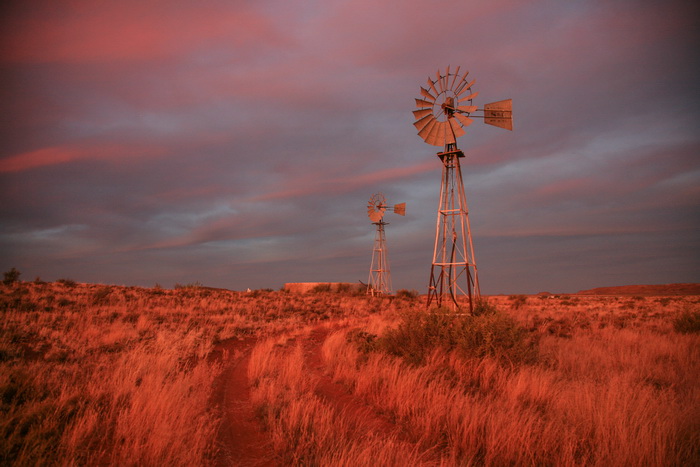
A couple of wind pumps outside Carnarvon in the red hue of sunset. Image: Chris Marais
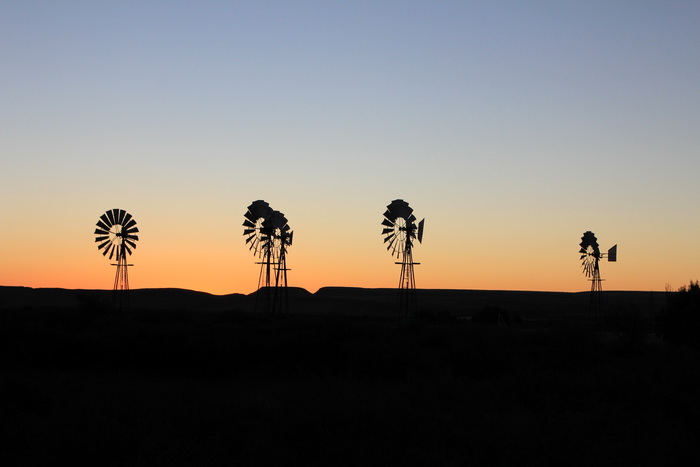
Wind pumps at sunset. Image: Chris Marais
Maybe it’s also the sound – the metallic sigh of the gears and the creak of the wind-rose turning into the evening breeze, the soothing whirr of the vanes, the blessing of water splashing into a round dam.
Read in Daily Maverick: Catch the wind – The meditative magic of a Karoo windpump
Wind pumps in South Africa
The trekboer early settlers were subsistence livestock farmers who moved from the Dutch-colonised Cape into the Great Karoo from around 1760 onwards. A Hopetown farmer called PJ du Toit caused something of a sensation in 1874 when he became the first South African to import a wind pump. It was a Halladay Standard, made entirely of wood by the US Wind Engine and Pump Company of Batavia, Illinois, and for a long time it was the most sought-after brand in South Africa.
Then came the age of steel wind pumps, swiftly dominated by Aermotors. They were first manufactured in Chicago, Illinois, in 1888, and South African farmers were bewitched by them. Their slogan was unforgettable:
“Wherever you go you see them, whenever you see them they go.”
Although not unique to Aermotor, one of its great innovations was the oil bath in which the crank gears were part-submerged. This meant they were continually lubricated and the oil only needed changing once a year.
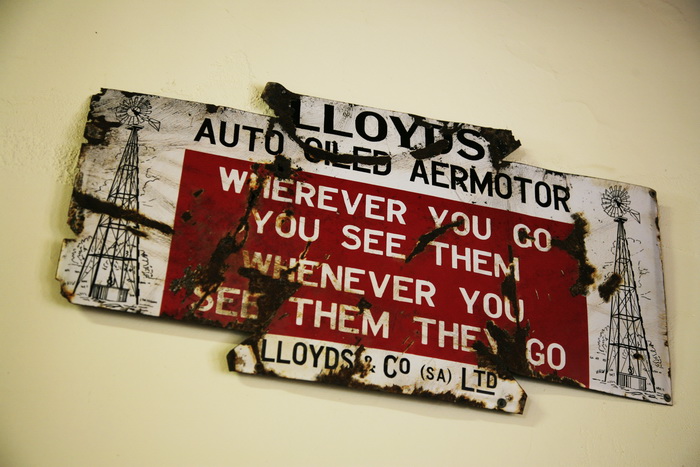
The unforgettable Aermotor catchphrase. Image: Chris Marais
Local production
For many decades, Aermotor and other American brands supplied 80% of South Africa’s market, while British brands like Climax accounted for the rest. Everything changed with the Second World War, when US manufacturers pivoted their factories to the production of armaments. Getting hold of imported farming machinery became nearly impossible for South Africans.
Stewarts and Lloyds, who had been agents for Climax wind pumps for many years, began manufacturing them under licence locally. Similarly, Southern Cross Industries in Bloemfontein made a popular brand of the same name. Today, it’s usually Climax, Southern Cross or Aermotor wind pumps that are still found whirring and swinging on their towers above the Karoo veld. But there are a few older models still out there, still working.
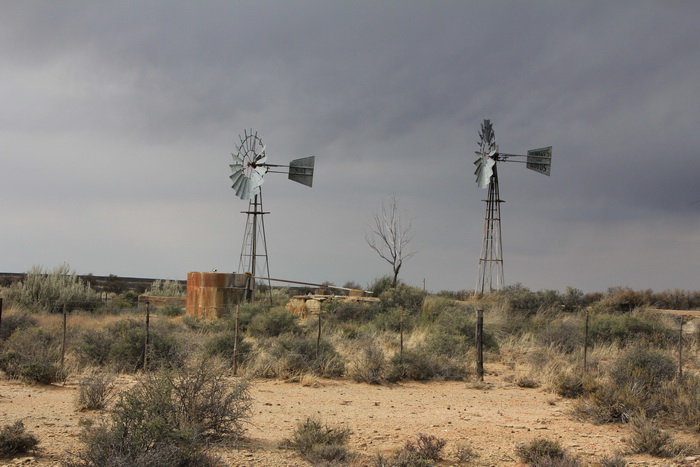
Wind pumps are the connectors between sky, earth and water. Image: Chris Marais
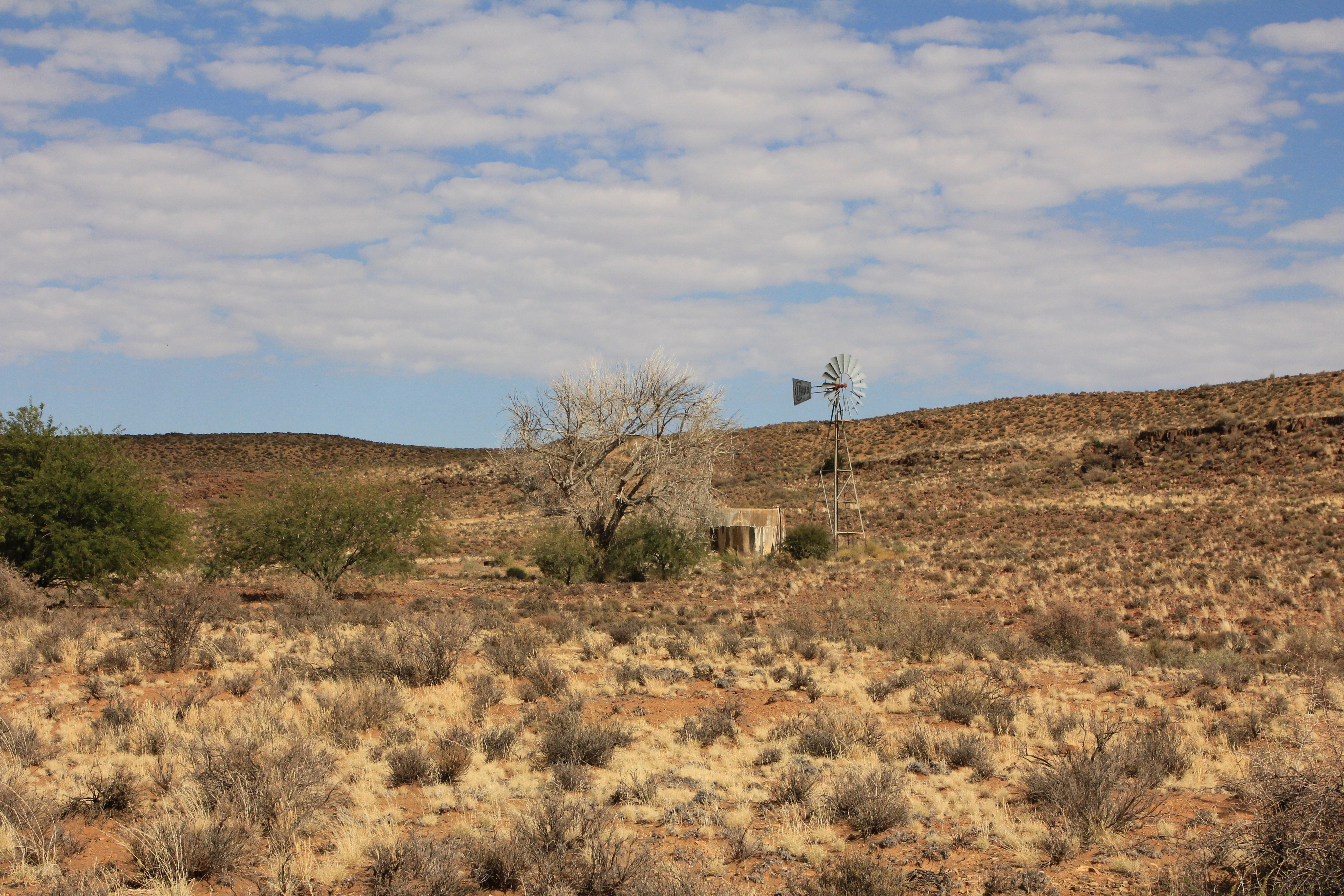
In the thrifty drylands, if it works, it stays. The Karoo remains a stronghold of wind pumps. Image: Chris Marais
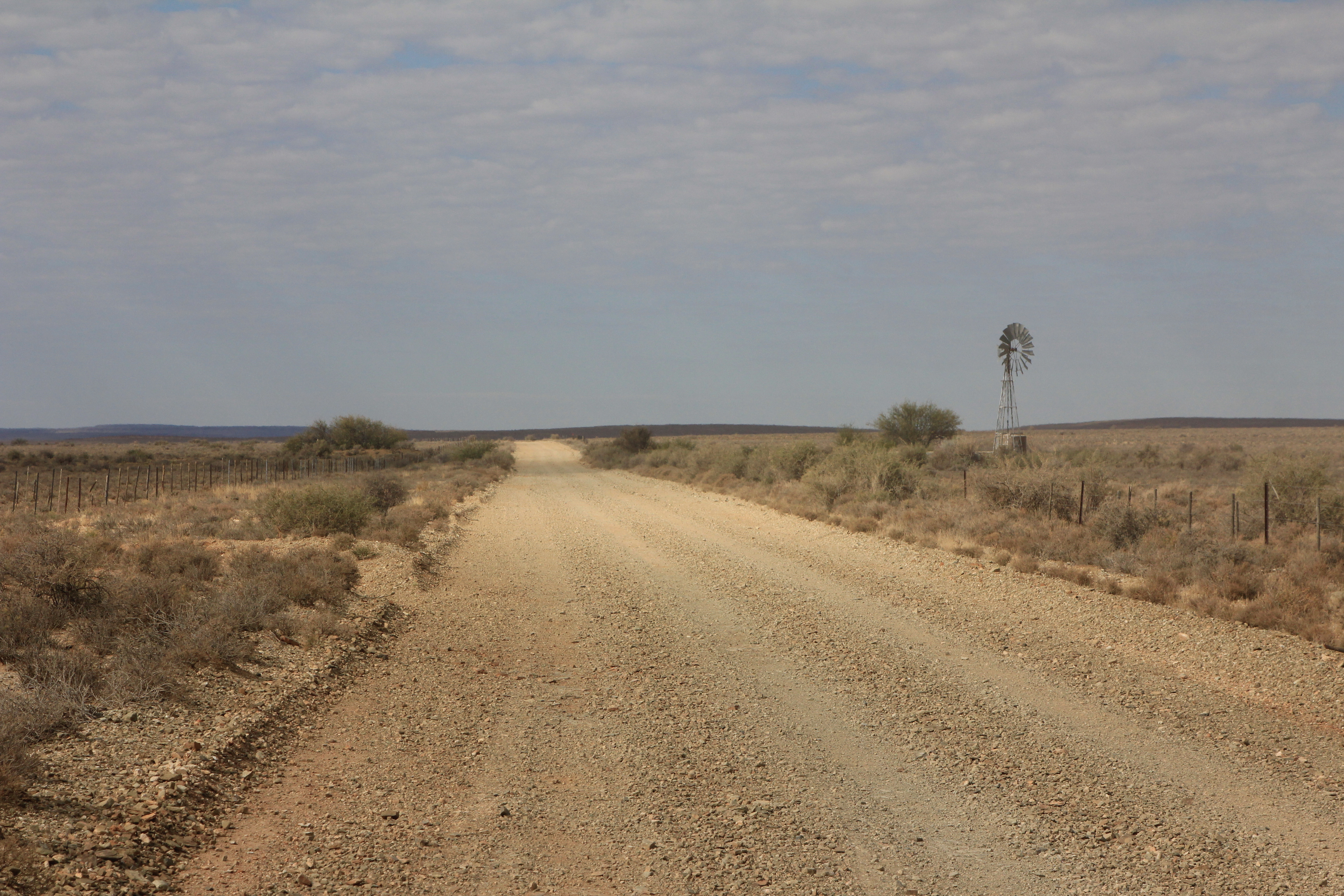
Overlanding on the backroads of the Karoo Highlands, there’s always a wind pump around to hold the landscape together. Image: Chris Marais
In the course of a 50-year career, Leon Swanepoel of Carnarvon has worked on nearly every kind of wind pump that ever drew water in the country – specifically those around Carnarvon, Brandvlei, Vanwyksvlei, right across to Calvinia, Victoria West, Vosburg and even Graaff-Reinet.
His favourite machine is a Climax for its endurance and dependability, but he respects the others and their quirks. The oldest one he’d ever tended to was a venerable Defiance Butler Oilomatic, still spinning after more than 70 years. DM
This story was first published on Karoo Space. For an insider’s view on life in the Karoo, get the Three-Book Special of Karoo Roads I, Karoo Roads II and Karoo Roads III by Julienne du Toit and Chris Marais for only R800, including courier costs in South Africa. For more details, contact Julie at [email protected]



















Die Kliphuis in Fraserburg has a wind pump right next to the accommodation. Lovely to watch the blades spinning in the wind and hear the sound of it working as the water is pumped into the raised reservoir.
Ag hoe mooi.
I’ve never heard windmills being referred to as wind pumps.
A “windpomp” in Afrikaans, but in English it’s a windmill.
I am so glad you have called them wind-PUMPS, and not by the incorrect name windmills. Afrikaans has it correct, South African English wrong.
As Andre Stone, Lecturer in Hydrogeology, Rhodes University said ” Pumps pump, Mills mill”